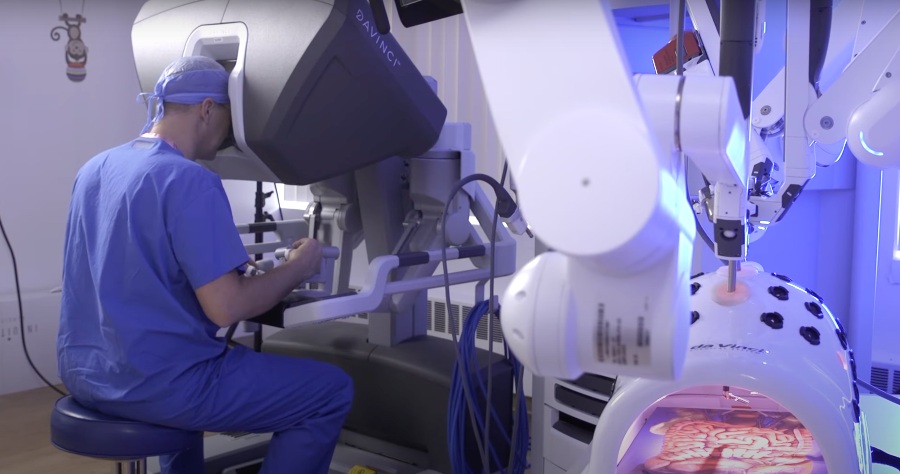
Prostate cancer is one of the most common malignancies diagnosed in men. The American Cancer Society estimated that over 230,000 new cases of prostate cancer were diagnosed in 2021. Among the several options that are available to treat prostate cancer, one of the most common treatment options for the initial stage of prostate cancer or when cancer has not been metastasized is prostatectomy.
Types of Prostatectomy
There are the following 2 main types of prostatectomies:
- Simple prostatectomy (only affected part of the prostate is removed)
- Radical prostatectomy (removal of entire prostate gland along with seminal vesicles and vas deferens is performed)
The radical prostatectomy can be further performed in the following ways:
- Nerve-sparing prostatectomy
- Radical prostatectomy with limited pelvic lymph node dissection
- Radical prostatectomy with extended pelvic lymph node dissection
There are numerous approaches to prostatectomies including open surgery, laparoscopic surgery, robot-assisted surgery (da Vinci prostatectomy), or hand-assisted surgery.
Surgeons may choose one approach over another depending on the following factors:
- the patient’s choice and medical condition
- the preferred skill set of the surgeon
- quicker recovery time
- costs associated with each approach
Although all of the above-mentioned methods have their own pros and cons, the most common and trusted method that is currently being used is da Vinci prostatectomy.
What is da Vinci prostatectomy?
The da Vinci prostatectomy, also known as robotic-assisted radical prostatectomy, is a surgical system designed to provide surgeons with unmatched precision and control during complex procedures such as radical prostatectomy (RP) and radical prostatectomy with lymph node dissection. This minimally invasive surgery uses three-dimensional high-definition vision and advanced instruments to remove the entire prostate gland with up to 1.02 mm of precision. It can be used in localized prostate cancer or prostate cancer with metastasis to regional lymph nodes.
Why choose da Vinci prostatectomy?
As the prostate gland is covered by extensive nerve fibers it is very important to make sure that those nerve fibers are not damaged during the surgery. Compared with traditional open surgeries, the robotic prostatectomy provides up to 1mm precision, therefore, minimizing the chance of nerve damage that can lead to erectile dysfunction or other urinary problems.
The patients who undergo robotic-assisted radical prostatectomy also experience less blood loss, shorter hospital stays, and faster recovery times.
What examinations are performed before da Vinci prostatectomy?
Before da Vinci prostatectomy, the doctor may recommend the following examinations:
- Transrectal ultrasound – Your healthcare provider will insert a tiny probe into the rectum to examine the size and location of any tumor (s) within the prostate.
- Magnetic resonance imaging – Your health care provider will inject dye into your veins to help create a 3D image of the inside of your body. This test also helps determine whether there are other cancers throughout your body.
- Bone scan – You may have a bone scan performed if you have pain or feel weak. This test looks for tumors that have spread to your bones.
What happens during da Vinci prostatectomy?
You will lie on your back on the operating table under a general anesthetic. Your surgeon will make six small incisions in the pelvis area (four lateral and two anterior) through which instruments enter the body. These instruments are used to dissect and remove the prostate and seminal vesicles. Once removed, they will be sent to a pathological lab for examination.
The surgeon might also perform prostatectomy with lymph node dissection around the bladder neck and lower part of the pelvic wall if necessary.
During da Vinci prostatectomy, the surgeon controls both arms of the Robot simultaneously. The surgeon manipulates the robot using hand-eye coordination rather than relying on eye movements alone.
What can be expected after da Vinci prostatectomy?
Following this procedure, you may experience discomfort for up to 2 weeks. You may need assistance walking until your legs regain strength. Your urine stream should generally return after about a few months. Your erections should return to normal within a few months as well.
What to Expect During Recovery?
Most men return home the same day or in 2-3 days. You will receive instructions from your surgeon regarding postoperative exercises. After discharge, you will receive follow-up visits to monitor your progress.
You will begin physical therapy immediately upon leaving the hospital. Physical therapy includes range-of-motion exercises to strengthen your muscles and improve flexibility. To minimize swelling ice packs or compression garments may be applied. You may also wear a support hose over your penis to maintain blood flow.
Your urologist will schedule regular checkups for the first month after surgery. They will discuss your urinary symptoms and your sexual activity at these appointments. You will be instructed to keep your urine clean and pass it when needed. Be sure to drink plenty of fluids and avoid caffeine intake during the day.
At the end of one month, you will see your urologist again to assess your healing process.
In most cases, you can resume all routine activities, including work, sports, and sex, in 4-6 weeks post-surgery
Side Effects
Although da Vinci prostatectomy is safe if performed by an experienced surgeon but still in some cases following side effects were observed:
- Incontinence – When you urinate, you can lose control of the amount of urine coming out. Some people may not notice any changes in their ability to void urine. Others may find that they leak more frequently or have trouble controlling their bladder. These problems usually resolve themselves within 1–2 weeks.
- Infection - Infection is another common complication of prostate surgery. Tell your doctor right away if you feel sick, feverish, or have other signs of infection. You may need antibiotics to treat infections.
- Blood clots - Although rare but some patients may develop blood clots in the leg veins after surgery.
- Bleeding - Bleeding from the surgical site is possible but usually, it is only a tiny amount of blood.
Cost of da Vinci prostatectomy in Germany
The Cost of da Vinci prostatectomy varies depending on the hospital and the experience of the surgeon.
In Germany, the cost of the surgery ranges between 14,000-30,000 Euros. This amount covers the cost of the initial clinical and laboratory examination, da Vinci prostatectomy surgery itself, the follow-up examinations, the hospital stay, and the elaboration of recommendations for future treatment.


Comments